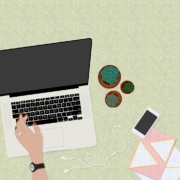How to Find Balance Between Work and Life
Author: Kathryn Lodwick-Jones
Finding the balance between work and life can be an exhausting balancing act in today’s fast paced world. We are immersed in grind culture, with never-ending to-do lists, and the constant pressure to “be more productive” or “stay on task”, while potentially also working long hours. Achieving a sense of balance is not only essential for mental wellbeing but also our physical health and overall life satisfaction. When we don’t set boundaries, work can easily take over our lives, leaving little room for relaxation, hobbies, or meaningful connections.
Over time, this imbalance can lead to exhaustion, resentment, and even health issues. Work like balance can help reduce stress and prevent (or better manage) symptoms of burnout, improve relationships and increase meaningful connections with loved ones. Finding balance also increases our productivity and job satisfaction as well as focuses our priorities on personal well-being to improve a positive view of ourselves. Here are some strategies to help you achieve work-life balance.
Prioritize and Organize Your Tasks
Not everything on your to-do list is urgent, even if it feels that way. It’s easy to get overwhelmed when things feel like they are piling up. There are a few ways you can improve your executive function by implementing an organizational structure or strategy. Whether it’s the Eisenhower Matrix to determine what’s most important to help delegate or postpone less critical tasks, the Pomodoro technique to structure breaks, or finding an accountability-buddy to help you stay on task, finding an organizational strategy can take away the guess work.
Set Clear Boundaries and Learn to Say No
Being productive often feels good, it gives us a sense of accomplishment and being in a flow state can be hard to break. That said, a boundary-less work ethic is not sustainable. Define clear working hours and stick to them. If your job allows, avoid answering work emails or messages after hours and mute work notifications or better yet, uninstall your work email from your phone on non-workdays. You can communicate your availability to colleagues and supervisors to create a separation between work and personal time in both subtle and assertive ways. Taking on too much at work or in your personal life can quickly lead to burnout, so be honest about your capacity and don’t be afraid to say no to additional responsibilities that don’t align with your priorities.
Make Time for Yourself
As adults, scheduling regular time for hobbies, exercise, relaxation and socialization can feel insurmountable. Until you joined the workforce, you were probably in a highly structured environment with clearer opportunities for connecting with others or being active. Setting aside time for your personal interests doesn’t have to be hard, but it is necessary! Whether it’s reading a book, taking a walk, going to a Zumba class, or grabbing dinner with a friend, taking care of yourself physically and mentally and is a non-negotiable habit we have to actively work at prioritizing.
Unplug Regularly
Just like scheduling time to relax or engage with passions and loved ones, we have to be conscious of our screentime. Although technology keeps us connected, it can also blur the boundaries between work and home, relaxation and checking out. Set aside screen-free time each day to focus on personal interactions, relaxation, or simply being present in the moment. It’s okay to binge watch a show or wind down to a movie from time to time, but doomscrolling the night away or losing a weekend to a Youtube rabbit hole is not enriching or rewarding.
Embrace Flexibility and Advocate for Yourself
Part of being flexible and taking care of yourself involves constantly exploring what your needs are and how they change. If possible, explore flexible work arrangements such as remote or hybrid work, compressed workweeks, or adjusted start and end times. This can allow you to structure your day in a way that meets both professional and personal needs.
Seek Support When Needed
If work-life balance feels out of reach, consider seeking guidance from a mentor, coach, or mental health professional. Sometimes an outside perspective can help you find solutions you might not have considered. Achieving work-life balance isn’t about perfection—it’s about making intentional choices that support your well-being. By setting boundaries, prioritizing self-care, and managing your time effectively, you can create a more fulfilling and sustainable lifestyle. It’s okay if that looks different from job to job, the aim is to be flexible and attentive to your needs.
Here are a few resources for how to get started on your journey to a more balanced work and life.
- More about the effects of screentime
- How to Stay Mentally Balanced Throughout the Year
- Psychological Impacts of Burnout
- How to Practice Self-Compassion
- How to Plan Your Mental Health Goals for the Year
- Benefits of Exercise on Mental Health
Equilibria is a group of licensed mental health professionals in Pennsylvania and New Jersey with multiple specialties to serve all aspects of our diverse community’s mental, emotional, and behavioral needs. We provide in person and telehealth services to individuals of all ages, families, and those in relationships. Click here to schedule an appointment today.








